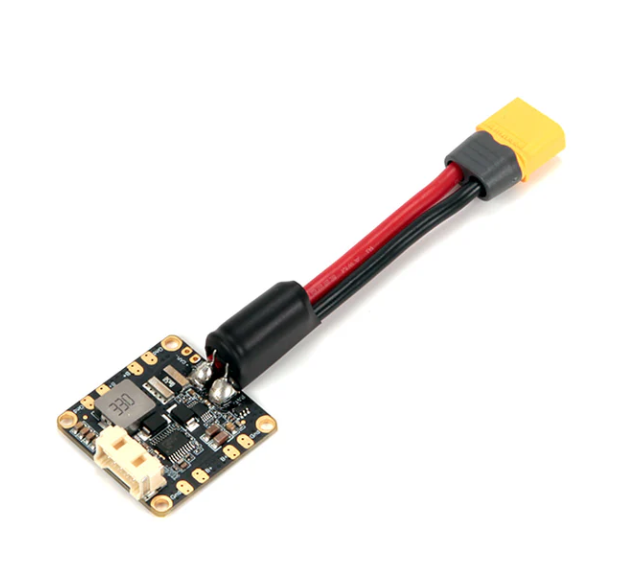AUTONOMOUS DRONE FOR INFRASTRUCTURE INSPECTION
Technical skills involved in this project
Programming: Python
Mechanical: SolidWorks, 3D Printing, Hardware assembly
Electrical: Digital Multimeter, Soldering
Software: ROS2, Flask API, Spacy (NLP), numpy, openCV (canny edge)
Machine Learning: CNN, VLM (SmolVLM-256M, SmolVLM-500M, SmolVLM-2.2B, Moondream2-0.5B/2B)
Soft Skills: External stakeholder engagement, communications, teamwork, presenting
PROJECT SUMMARY:
This project is my 4th year capstone project with collobration with three other robotics engineering student: Andrew Jairam, Gurpreet Mukker and Ethan Rajah.
RotomBot is a micro-autonomous drone system designed for infrastructure surface inspection, with a focus on detecting structural cracks. Aimed at site managers with limited technical background, the system emphasizes ease of use and interpretability. Users initiate inspections using natural voice commands (e.g., “Inspect Building A and B”), prompting the drone to autonomously navigate to specified waypoints. At each location, it captures multiple images, selects the clearest using a Laplacian edge detector, and performs onboard crack detection using a YOLO-based model. If a crack is found, the image is sent to an offboard vision-language model (VLM), which provides a severity assessment and actionable repair suggestions in plain language. The results are logged in a web-accessible database for review. The system design was validated through consultation with three domain experts—a materials engineer, a nuclear engineer, and a mechanical engineer—to ensure its practical relevance, usability, and clarity of output.
BACKGROUND & PROBLEM STATEMENT
Structural cracks in civil infrastructure pose serious safety risks and can lead to costly failures if not identified early. Traditional inspection methods are labor-intensive, time-consuming, and often require technical expertise, making regular assessments challenging—especially in hard-to-reach or hazardous environments. This project addresses the need for a low-cost, autonomous inspection solution that simplifies crack detection and reporting. By leveraging drone automation, computer vision, and natural language interfaces, the system empowers non-technical site managers to quickly assess structural health, prioritize maintenance, and reduce reliance on manual inspections.
HARDWARE DESIGN CHOICES
Frame: Minion Mini H-Quad racing frame (5 inch)
Motors: 4 x 2206-2350 KV RotorGeeks
ESC: Spedix ES30 EV30A ESC
Power Distribution board: HolyBro PM06D
Propellers: 5.1x4x3 props
Carrier frame: Custom 3D printed
Flight Controller: CubePilot Orange Cube+ Flight Controller
Onboard computer: Jetson Nano (4GB)
Transmitter: FrSky Taranis X9 Lite
Receiver: Archer R4
Some selected components decisions:
Frame is off the shelf, made of carbon fibre (lightweight and strong), chose 5 inches frame since the size is small, agile and uses smaller props which is good for indoor testing environment (indoor use with VICON).
2350KV motor is chosen for indoor environment and its good current to thrust ratio.
Spedix ES30 is chosen due to its 30A current capability and its D-shot capability which allows changing motor spin direction through software instead of hardware wiring.
Cube+ pilot flight controller chosen as its has multiple redudent IMU for reliability, firmware is opensource and has great community support (can be used with PX4).
Transimitter and receiver are simpler ones since most of the project is on autonomy, we just need them to have a few switches to perform emergency actions (kill, change flight mode to manual etc).
Jetson Nano 4GB is chosen due to its onboard GPU capability. Although if budget allows, we would likely go for newer Jetson Orin Nano 8GB.
DESIGN REQUIREMENTS & CONSTRAINTS
DESIGN PIPELINE
RESULTS
WEB UI RESULT
OBSTACLE AVOIDANCE POTENTIAL FIELD RESULT
CONCLUSION
The RotomBot project successfully demonstrated a cost-effective, user-friendly autonomous drone system for detecting structural cracks in civil infrastructure. Through voice-activated waypoint navigation, onboard crack detection using YOLO, and offboard natural language analysis via a vision-language model (VLM), the system enables non-technical users—like site managers—to conduct inspections with minimal effort. Results are clearly logged in a web-accessible database, providing actionable insights and prioritization of repairs. The prototype achieved over 90% detection accuracy, robust description quality, and real-time responsiveness, validated by expert feedback from engineering stakeholders. RotomBot sets a strong foundation for scalable, accessible infrastructure monitoring in safety-critical environments.
















